




All students, with the exception of Ms. Kerr, will find materials relating to their assigned cases at the National Archives facility in Philadelphia. Ms. Kerr's records are in Annapolis and on line at ecpclio.net.
Directions to NARA, Philadelphia, are on their web site.
If you go by train, when you get off at the 30th Street Station, take the SEPTA (free) to Market East (two stops). Walk to 10th street, cross the street heading towards Chestnut, turn right on Chestnut. The entrance is on the ground level of the U. S. Court House on Chestnut between 9th and 10th streets. If you should go into the court house entrance on Market by mistake, they will direct you to go behind the building to Chestnut.
The hours are from 8 to 4 on the Saturdays they are open (second and fourth saturdays of the month) and 8-5 on weekdays excluding Federal holidays.





When you arrive, you must register at the guard's desk and obtain a researcher's card. Then proceed to the searchroom where you ask for the records at the circulation/reference desk.


They should be on a cart waiting for you, but you will have to fill out the request slips (Reference Service Slip), generally one for each volume or box (clamshell) you use.




This is the cart I used with all the cases on it.

How to Order:
1) Mr. Bell: Myers v. Anderson..., 238 U.S. 368 (1915), and Anderson v. Myers, 182 F. 223 (1910). Voting rights; William H. Howard subject of biography. The slip should carry the 'record identification' of U. S. Circuit Court- Law Cases, Docket E- cases # 39, 40 & 41. The RG no. is 21 (Record Group number); the stack area: #, row: 2, Compartment 3, shelf 7-15. There is one clamshell, no. 1 on the photograph above.

2) Ms. Lancaster: Mills v. Bd of Ed of Anne Arundel Co., 30 F. Supp. 245, and Mills v. Lowndes, 26 F. Supp. 792, (1939) (discrimination re: pay; Thurgood Marshall subject of biography). The two request slips, nos. 2 a/b on the photograph above, should carry the 'record identification's of U.S.D.C. Maryland, Mills v. Lowndes, Civil Case # 56, Box #6, located at RG 21, C, 6, 7, 6-14, and Mills v. Board of Education of Anne Arundel County, Maryland. U.S. D. C. Civil Case #170, Box 21, located at RG 21, C, 6, 7, 7-13.
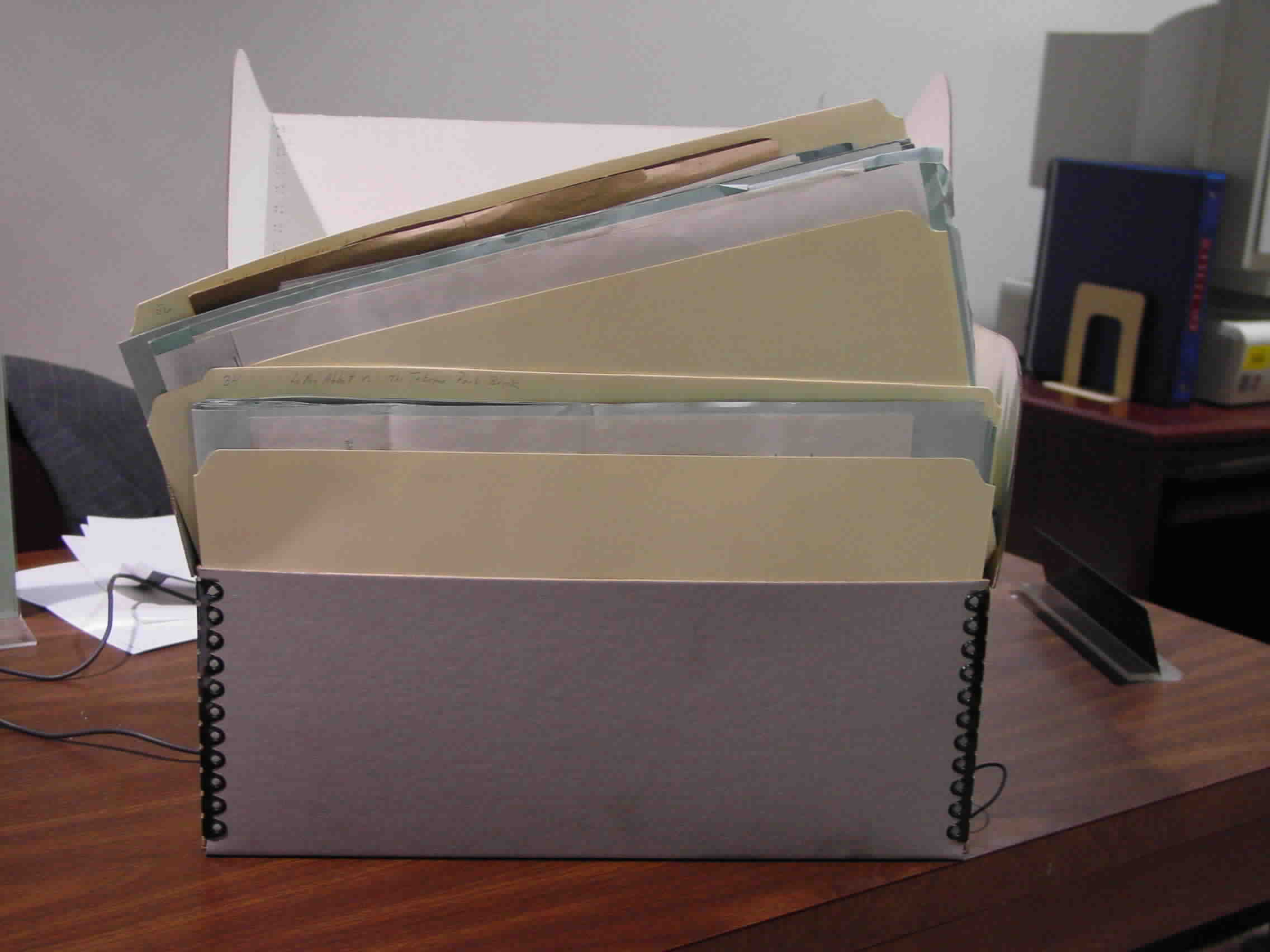
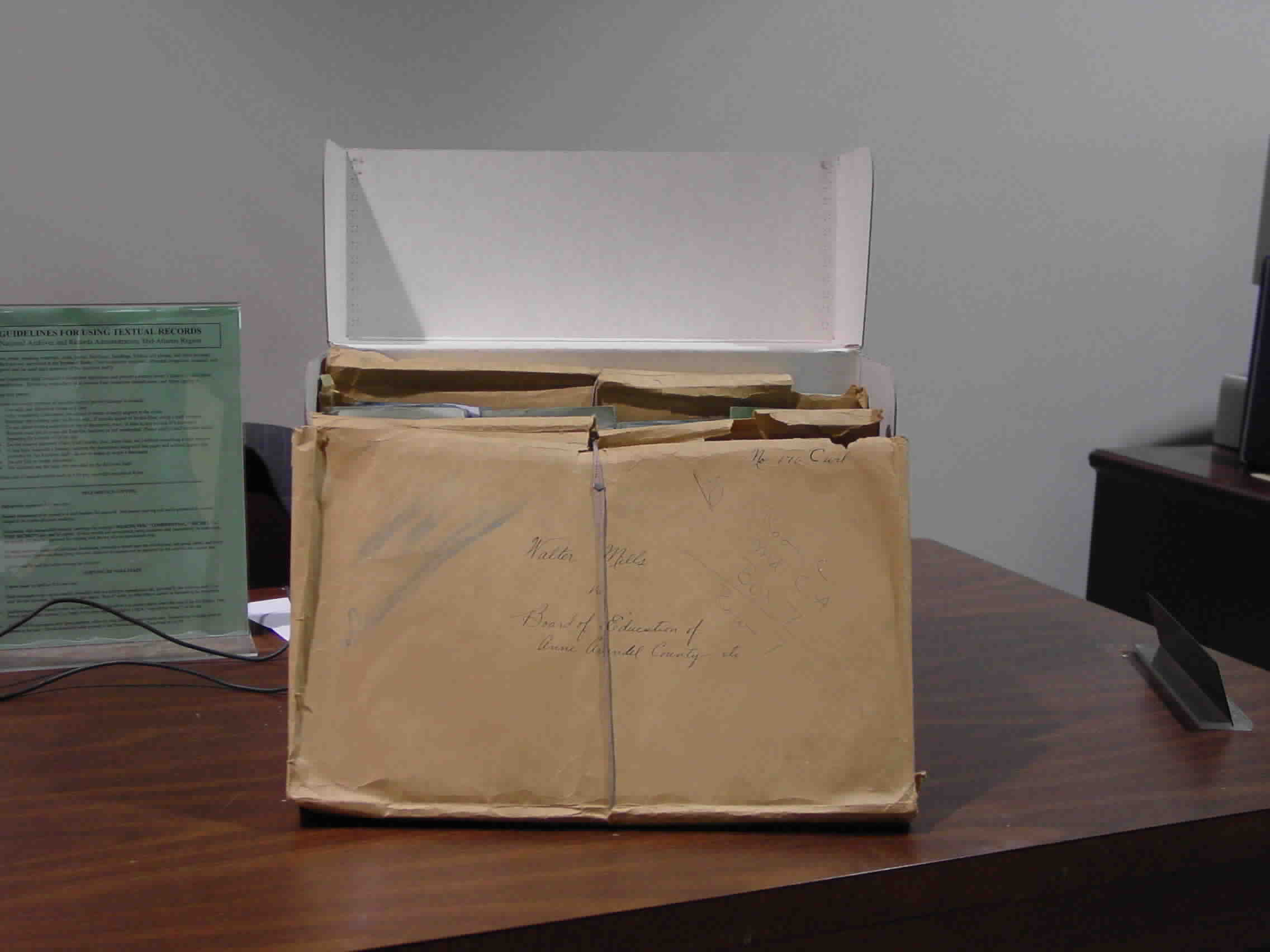
3) Ms. Cho: Kerr v. Enoch Pratt Free Library, 54 F. supp 514 (1944) (discrimination in library training; W. A. C. Hughes subject of biography). Thre is one clamshell and one volume of Records and Briefs (nos. 3 a/b on the photograph above). The two request slips should carry the 'record identification's of Kerr v. Enoch Pratt Free Library, U.S. D. C. Maryland, Civil Case #2071, box # 199, with a location of 21, C, 6, 8, 9-15, and 4th Circuit Court of Appeals, #5273, vol. 866 Kerr v. Enoch Pratt Free Library, RG 276, Stack Area A, Row 21, Compartment 8, shelf 1-10.
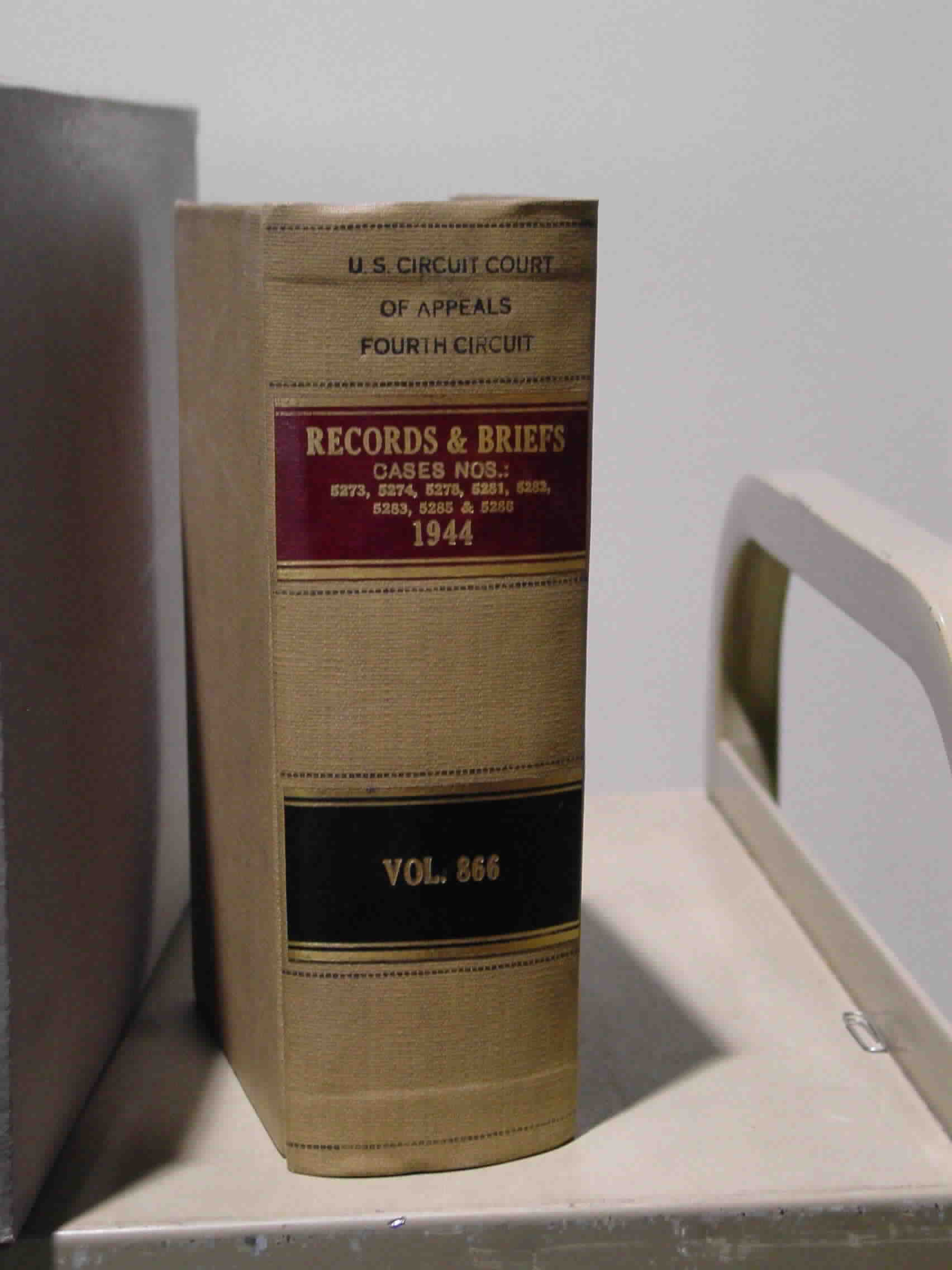
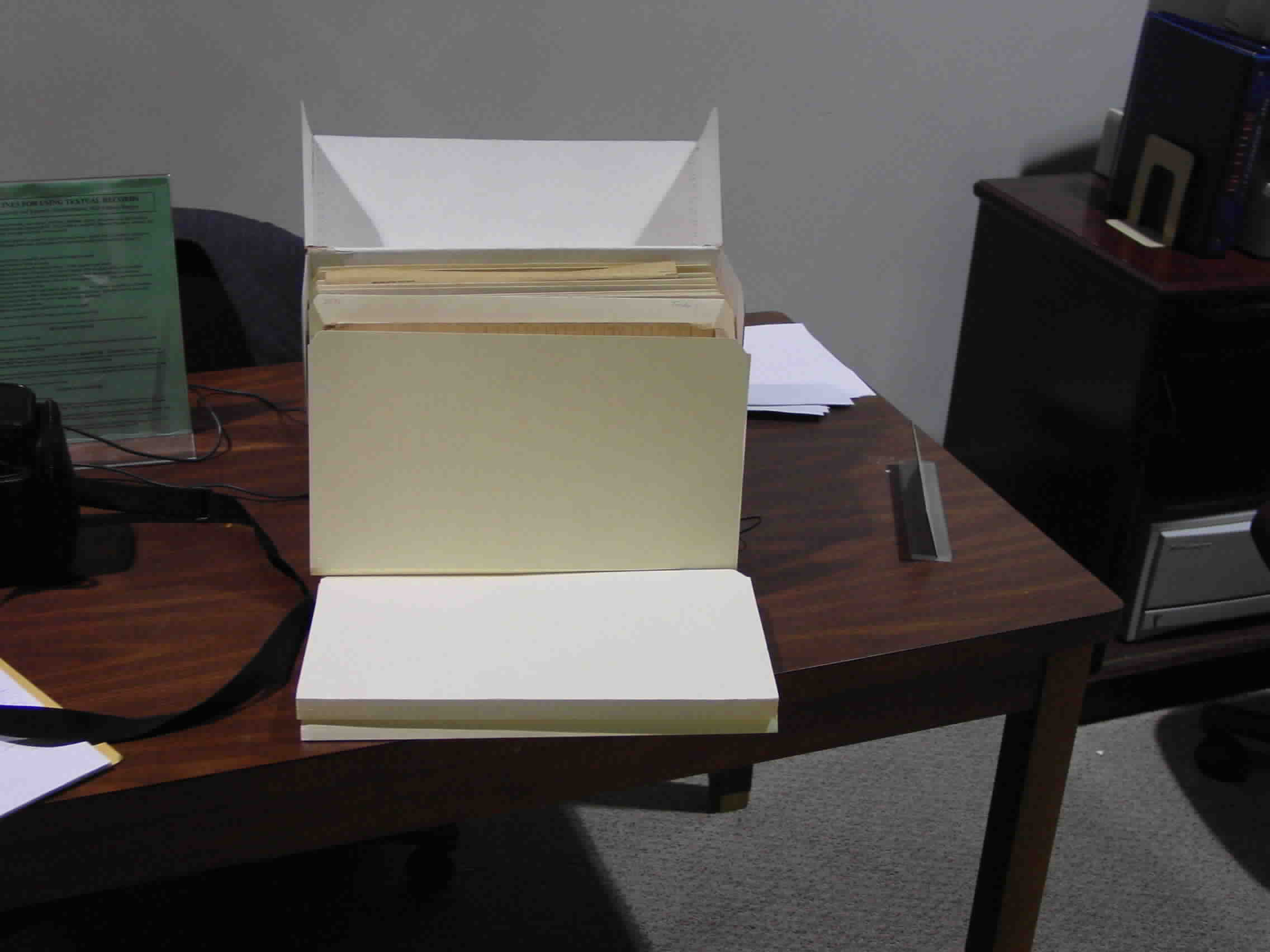
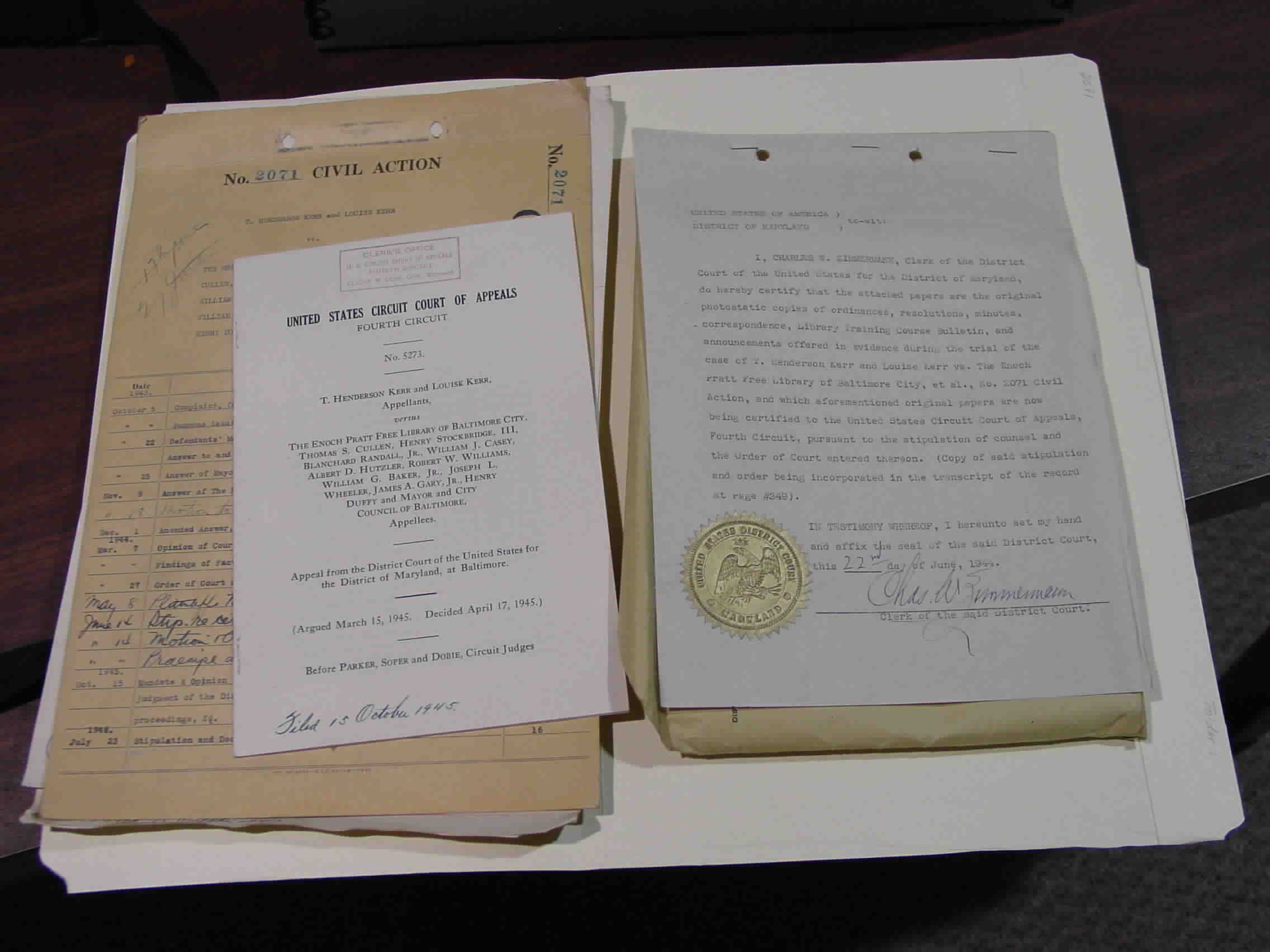
4) Ms. Davidson: Boyer v. Garrett, 88 F. Supp 353 (1950) (integration of public parks; Dallas Nicholas subject of biography). There are two boxes and a bound volume of Records and Briefs (nos. 4 a & b on the photograph above). The two request slips should carry the 'record identification's of Boyer v. Garrett U. S. D. C. Maryland Civil Case #4152, Boxes 335-336, with locations of RG 21, Stack C, Row 6, Compartment 9, Shelf 9-7&8, and 4th Circuit Court of Appeals, #6613, Vol. 967, Boyer v. Garrett, RG 276, Stack A, Row 22, Compartment 1, Shelf 3-6.
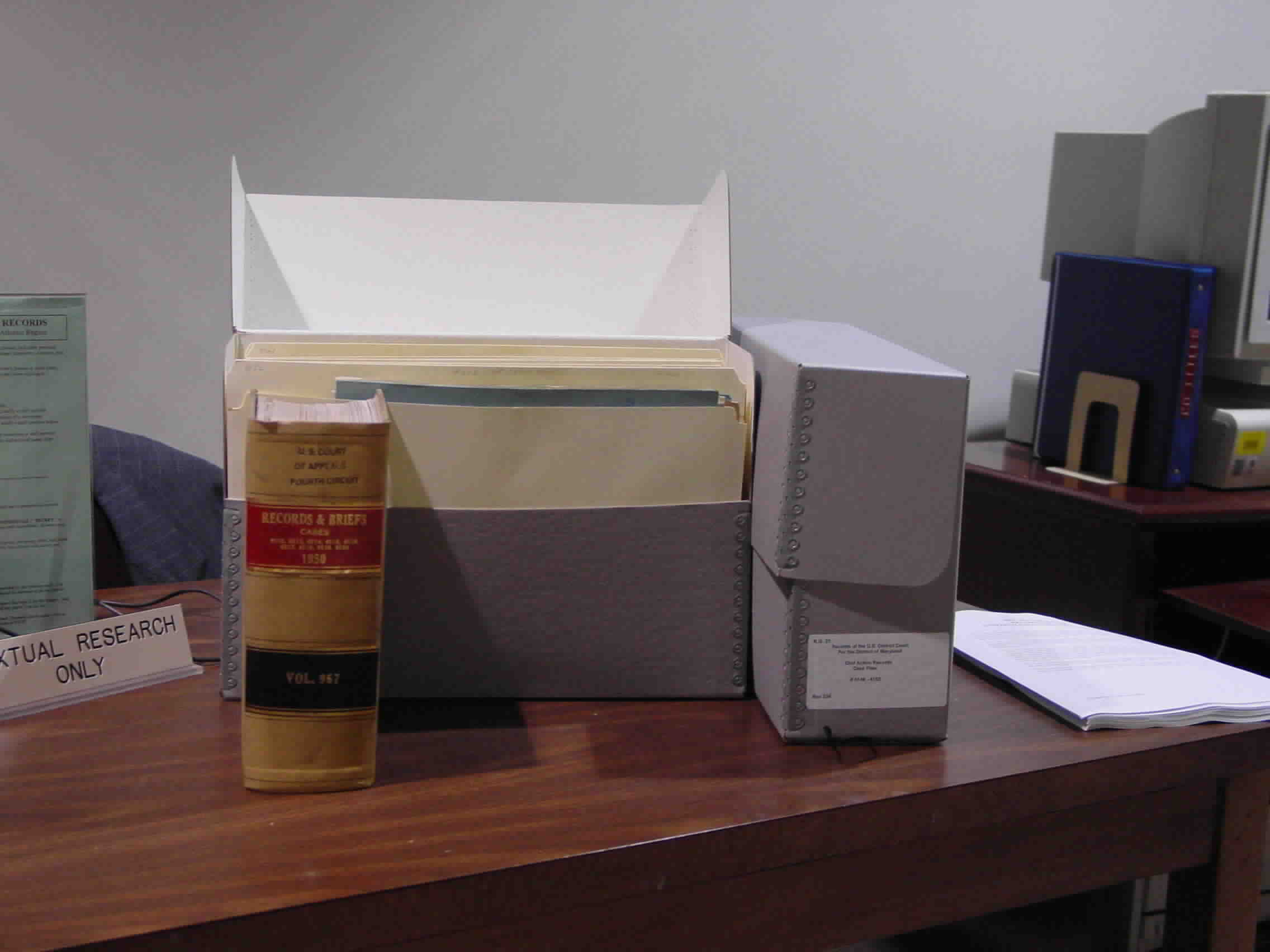
5) and 5 a/b in the photograph above are the records in the Harper v. Baltimore case, 1973.
6) is the docket for the McGuinn v. Forbes case, 188 for which there
appear to be no case papers.
If you were to search for these cases from scratch, your first task would be to read the reported case(s) carefully, noting where the case was first heard, any case numbers, the type of case (civil, criminal, equity, etc.) and when the case was introduced into each level of the court where it was heard (Federal District Court, Federal Court of Appeals, Supreme Court of the U. S.). Then use the NARA finding aids for Federal Court Records, where you would need to know the type of case (e.g. Civil) and the year it was instituted. You would then request and examine the docket, which in turn would give you a case number or case numbers to request. Sometime the case numbers are contained in the printed opinions, records, and briefs, but not always. In general, the NARA finding aids provide a good introduction to the records of the Federal Courts.
Also see an outline of web-based guides to finding printed opinions, records, and briefs for Federal cases.
Note that the records of the Supreme Court are at NARA, College Park
and at the Supreme Court Library. It is always a good idea to check
the NARA website for document locations.